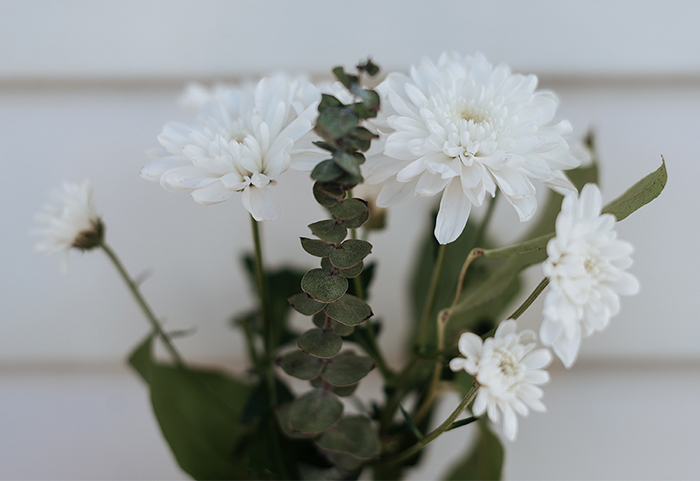Six things you might not know about Mother’s Day
Mary Hinsen
04 May 2021, 6:27 PM
 Each year, the second Sunday in May is celebrated as Mother’s Day.
Each year, the second Sunday in May is celebrated as Mother’s Day.Mothers’ Day originally began as an anti-war statement, and has blossomed over the years into the day we all show our gratitude to our mothers.
Mother’s Day has become a day of remembrance and gratitude, where we all make our mothers feel special in some way, from phone calls to sending flowers, from a special lunch to a family gathering.
But the history behind Mother’s Day is full of controversy. It has unexpected roots, and is often associated today with consumerism.
Here are six things you might not know about Mother’s Day.

White carnations are the original flower of Mother’s Day.
Number One: Celebrations of mothers and motherhood can be traced as far back as the ancient Greeks and Romans, and have seen many changes through the centuries.
Ancient Greek and Roman civilisations held festivals in honour of the mother goddesses Rhea and Cybele.
In Greek mythology, Rhea was the mother of the gods, goddess of female fertility, motherhood and generation.
The myth goes that when Rhea’s husband Kronos heard a prophecy that he would be deposed by one of his children, he took to swallowing them as soon as they were born. So, Rhea bore her youngest child, Zeus, in secret. Instead, she gave her husband a stone wrapped in swaddling clothes, which he promptly devoured.
When the Romans felt the need to reaffirm their moral superiority over the Greeks, their authorities described Cybele as their Great Mother, or Magna Mater.
Cybele was the mistress of wild nature, symbolised by her constant companion the lion. She was a healer, goddess of fertility and protector in times of war.
Early Christians developed a festival known as ‘Mothering Sunday’.
Historically, this was a major tradition in the United Kingdom and parts of Europe, and was celebrated on the fourth Sunday in Lent. It was seen as a time when the faithful would return to their ‘mother church’ for a special service.
Over time, Mothering Sunday became a more secular holiday, and was merged with the American Mother’s Day in the 1930s and 1940s.
Number Two: Anna Jarvis was the founder of the modern version of Mother’s Day; she was known as the ‘Mother of Mother’s Day’.
Anna Jarvis is the person most often credited with founding Mother’s Day in the US. The official Mother’s Day holiday began in the 1900s as a result of her efforts.
Following her own mother’s death in 1905, Anna conceived of Mother’s Day as a way of honouring the sacrifices mothers made for their children.
Mother’s Day was officially designated as the second Sunday in May in 1914 by President Woodrow Wilson. The tradition then spread internationally.
Anna Jarvis, known as the ‘Mother of Mother’s Day’, spent a lot of effort in the ensuing years trying to stop commercialisation and maintain the focus of Mother’s Day on children celebrating their mothers.
Number Three: The modern concept of Mother’s Day had actually started before then, as an anti-war movement.
In fact, other women had the idea first, but with different purposes. Julia Ward Howe, the author of ‘The Battle Hymn of the Republic’ promoted a Mothers’ Peace Day.
She wrote the ‘Mother’s Day Proclamation’ in 1870, a call to action that asked mothers to unite in promoting world peace. In 1873, Julia Ward Howe campaigned for a ‘Mother’s Peace Day’ to be celebrated annually.
Howe was an anti-war activist, and she and other activists, including Anna Jarvis’s mother, used Mothers’ Peace Day as a way to promote global unity in the aftermath of the horrors endured in the American Civil and Franco-Prussian Wars.
Mothers’ Peace Day called for all women to unite once a year, gather in their parlours, churches or community halls, and actively promote peace.
Number Four: The ‘Mother of Mother’s Day’ fought against using the day to raise money.
Since its early years, various groups each year have used the day to fundraise for charitable causes, including those supporting mothers in need.
However, Anna Jarvis did not like that.
In the days before there were charity watchdog organisations, fundraisers could not always be trusted to deliver the money to those people it was supposed to help. Anna Jarvis tried hard to stop anyone who tried to profit from the day.
Number Five: In line with this ethos of no profit, Anna Jarvis fought strongly against commercialisation of Mother’s Day.
It didn’t take many years before Mother’s Day became highly commercialised. Anna Jarvis continued to fight against what it became.
She is quoted as saying she didn’t want Mother’s Day to become a burdensome, wasteful day of giving expensive gifts.
Anna spent the rest of her life trying to protect the true meaning of Mother’s Day from commercial interests. She herself refused to profit in any way from the day, and died penniless at the age of 84.
Number Six: Flowers are an original Mother’s Day tradition that has endured.
White carnations, the favourite flower of Anna Jarvis’s mother, was the original flower of Mother’s Day.
In a 1927 interview, Anna explained her choice of flower:
“The carnation does not drop its petals, but hugs them to its heart as it dies, and so, too, mothers hug their children to their hearts, their mother’s love never dying.”
Images Pixabay
Advertisement



